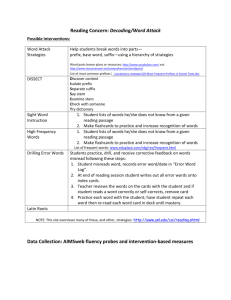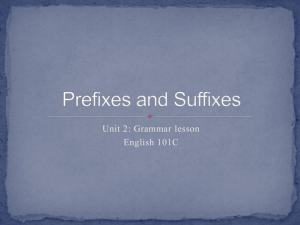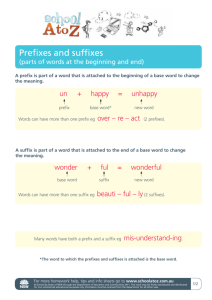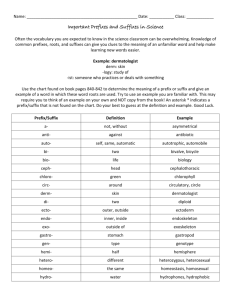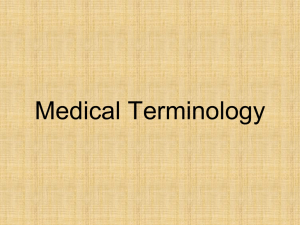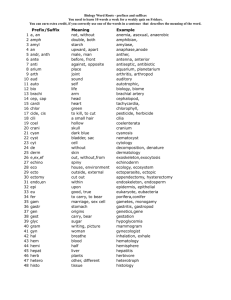Medical Terminology & Abbreviations: Class Notes
advertisement
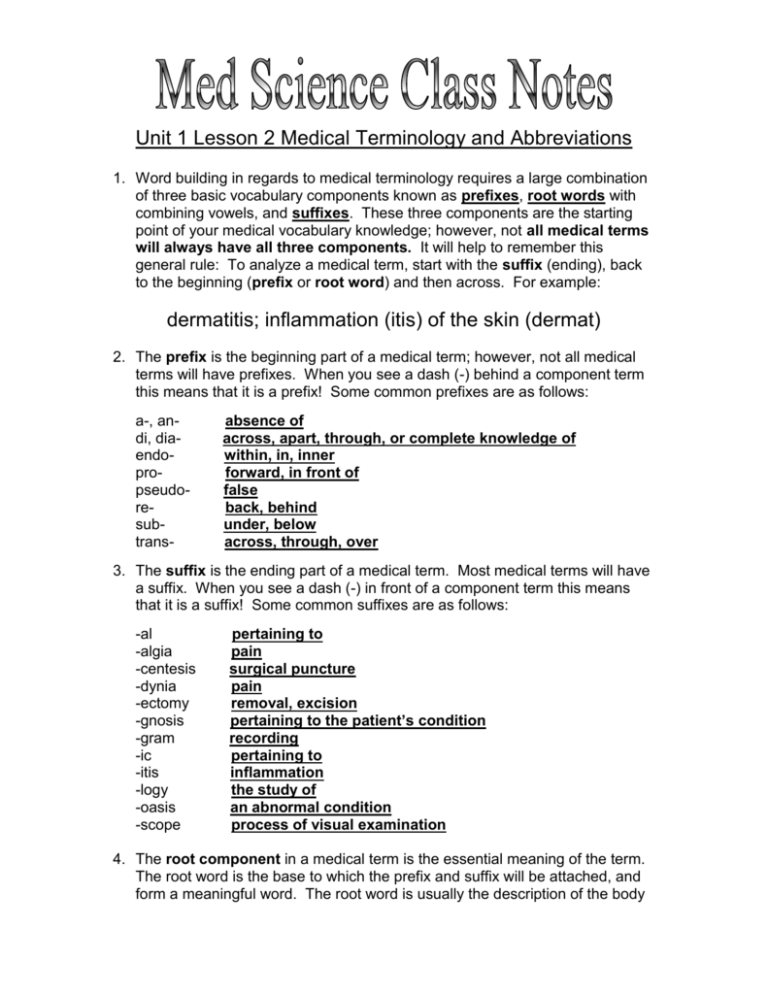
Unit 1 Lesson 2 Medical Terminology and Abbreviations 1. Word building in regards to medical terminology requires a large combination of three basic vocabulary components known as prefixes, root words with combining vowels, and suffixes. These three components are the starting point of your medical vocabulary knowledge; however, not all medical terms will always have all three components. It will help to remember this general rule: To analyze a medical term, start with the suffix (ending), back to the beginning (prefix or root word) and then across. For example: dermatitis; inflammation (itis) of the skin (dermat) 2. The prefix is the beginning part of a medical term; however, not all medical terms will have prefixes. When you see a dash (-) behind a component term this means that it is a prefix! Some common prefixes are as follows: a-, andi, diaendopropseudoresubtrans- absence of across, apart, through, or complete knowledge of within, in, inner forward, in front of false back, behind under, below across, through, over 3. The suffix is the ending part of a medical term. Most medical terms will have a suffix. When you see a dash (-) in front of a component term this means that it is a suffix! Some common suffixes are as follows: -al -algia -centesis -dynia -ectomy -gnosis -gram -ic -itis -logy -oasis -scope pertaining to pain surgical puncture pain removal, excision pertaining to the patient’s condition recording pertaining to inflammation the study of an abnormal condition process of visual examination 4. The root component in a medical term is the essential meaning of the term. The root word is the base to which the prefix and suffix will be attached, and form a meaningful word. The root word is usually the description of the body organ, area or part. All medical terms must have a root word component. Without the root word component the term would be meaningless. Combining vowels connect the root words to suffixes and root words to other root words. The combing vowel is usually an “O”, and is used between two root words or between a root word and a suffix to make it pronounceable. A combining vowel is not used between a prefix and a root word. Some common root words and combing vowel forms are as follows: arthr / o bi / o cardi / o cerebr / o dermat / o enter / o gastr / o hemat / o hepat / o neur / o oste / o path / o ren / o rhin / o urethr / o joint life heart cerebrum, the largest part of the brain skin intestines (often the small intestines) stomach blood liver nerve bone disease kidney nose urethra 5. Common Medical Abbreviations: AMA – against medical advice APGAR – new-born condition scale (appearance-pulse-grimace-activityrespiration) bpm – beats per minute CBC – complete blood count CCU – coronary care unit COPD – chronic obstructive pulmonary disease cc – cubic centimeter (analogous with ml – millimeter) cs – chem-stick (blood sugar) Dx – diagnosis D5W – dextrose 5% in water GCS – Glasgow comma scale MI – myocardial infarction PEARL – pupils equal and reactive to light qh – every hour qd – every day prn – as needed


